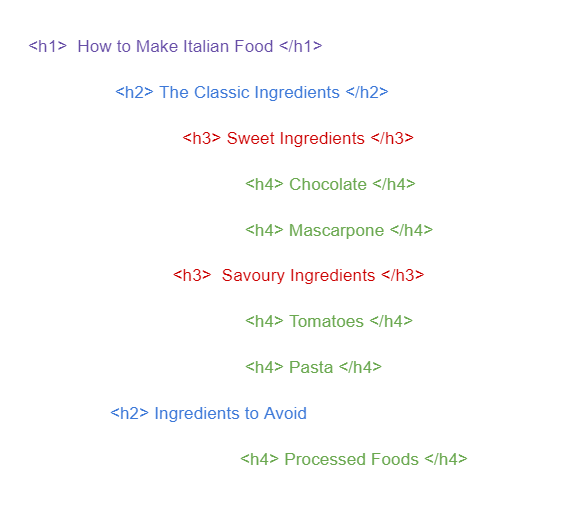Writing SEO-friendly content with the purpose of ranking highly on search engines can seem like a daunting task. But have no fear, with some of the tips and techniques I will show you in this guide you will be writing like an SEO expert in no time…
What exactly is SEO and SEO content writing
It’s always good to start at the very beginning because you may be asking yourself what exactly is SEO and SEO content writing? Well SEO is an acronym for Search Engine Optimization which as it turns out is a practice used by every top company in the world. It involves optimizing a website and its related content in such a manner that it can be found more easily on the search results of the biggest search engines.
To understand it more clearly it’s helpful to think of Google as a store,the results page as the front window of the store and all the items inside the store as every website on the internet. Now, in order to be viewed by the public, each item is competing for a place to be seen at the front window of the store. The store has specific requirements for which items get to hold a window position and it’s up to the items to comply with the store’s demands.
- Blogs
- Product Pages
- Articles
- Videos
- Guides
- Glossaries
It’s normal for companies to have an internal employee write this SEO content for their website but it’s becoming more and more common for the SEO content to be outsourced. This is where a company in need of SEO content can reach out to a freelance writer or one of the content-producing platforms like Textbroker and The Content Panel for example.
Still unsure about what SEO means? The video below made by Ahrefs does a great job explaining its important concepts:
Now that we’ve established what SEO and SEO content is we can look at how it’s written…
There are 3 foundations on which all well-written SEO content is based :
- Knowledge of the subject area
- Knowledge of writing technique
- Knowledge of SEO
I have based my guide around these 3 foundations so that you can write the quality content that search engines desire. Just as search engines can identify content that is overly optimized for SEO, readers can very quickly pick up when a writer has limited knowledge about a subject. This guide will help you avoid these pitfalls so let’s get right into it!
My guide will look into 5 different areas to improve your writing to ensure it’s as SEO-friendly as possible. They are in order:
- Research
- Meta Title and Meta Description
- Structure
- Using Keywords in phrases
- Incorporate Multimedia
Research
So what’s the first step you will take to do SEO and content writing? Research of course. This is perhaps the most essential step in the entire process. There is a limitless amount of tools and resources at your disposal to be fully prepared before starting any piece of SEO-related content.
- Subject Matter ‐ Having a good knowledge of the subject matter of the article or blog post is essential before you begin writing. Research on this can be carried out by scanning through the top 10 Google results of articles that focus on the same topic. You will get a sense of what your competitors are writing about and which elements you need to include in your piece.
- Keywords ‐ Keywords are at the center of what drives organic search traffic so they need to be well-researched beforehand. Tools like Semrush and Ahrefs are your friend in this situation, they can display which keywords to target based on the subject of your article. Should I use the same keywords for every page? Ideally, you want to target one main keyword per page which should appear on all the impactful parts of your content or ‘hot spots’ like the title, introductions, and subtitles.
- People also ask ‐ Another area of research is to analyze the ‘people also ask’ feature on Google searches. These questions are there specifically because there is a demand for answers to this type of question. So incorporate some of the questions and answer them in your article or blog post.
- Length ‐ The ideal length of a piece of SEO-optimised content is wholly dependent on the subject area. Some subjects are longer than others because they require more detail and analysis. So what’s the best way to find out how long my SEO-friendly content should be? My advice would be to use a SERP tool such as Thruuu . After you enter the main keywords of your article into the Scrape the SERP search box it will provide you with some terrific analysis of the titles and word counts of your competitors. As a general rule, you want to at the very least equal the word count of your top competitors in order to have a chance of ranking highly.
Title and Meta Description
Your Meta title along with the Meta description are the two things that will appear on google so it’s vitally important that you get them right. The content displayed on the title and the meta description is what Google and its user will use to determine what your page is and if they want to click on it. As a rule of thumb:
- The meta title should have a maximum of 66 characters
- The meta description should have a maximum of 155 characters
Don’t forget: It’s important to add the targeted keywords into your meta title and description.
Post Title and Meta Title
‐ It’s important to understand the difference between a Post Title and a Meta Title; a post title is the title that will be displayed to the user when they open the web page to your blog or article. On the other hand, a Meta title is a title your page will display on search engines.
Meta Descriptions
‐ When thinking of what to write as your meta description it’s helpful to think of it as an advertisement to click on your page. Ways to make your meta description more SEO-friendly is to keep it under the character limit of 155 characters and implement your main keywords into it.
Structure
The next step to consider if you’re a beginner writing a piece of SEO-friendly content is that the work must be structured in a way to please both the reader and Search Engines. The point you are trying to get across to the reader can be easily lost and they can become uninterested if the content is poorly structured.
Paragraphs
‐ A well-structured article or blog post will usually include numerous paragraphs or subtitles accompanied by sub-subheadings. These are identified as H1 for the title of the post, H2 for any subheadings, and H3 for any sub subheadings. The graphic below is an example of that:
Using Different Formats
‐ The use of different fonts, sizes, and colors to complement the structure of your article is a great way to make the page more eye-catching and appealing to visitors. Added to that, the use of bullet points and numbering for paragraphs can make it easier for users to read the information and is more SEO optimal.
Using Keywords
Incorporate Multimedia
Including both images and videos in your content is an effective way to keep the reader both engaged and active during his/her visit. People, and especially those online, are naturally very visual so even a well-placed or eye-catching image can be the difference between a user continuing to read or stopping.
Images
– Images should only be used where necessary when you need a break in text or wish to show a concept without words. It’s important to be cautious to not overuse images in place of text as it will negatively affect your ranking position. Downloading platforms for stock images like Adobe Stock is a popular choice for content writers.
Videos
– Videos can also represent a terrific method of keeping readers on the site. Whether the video is used to explain something in more detail or represent a concept visually, they can massively increase a user’s time spent on a page which is only beneficial for SEO.
Checklist for your first SEO optimized content
- Research the subject by analyzing competitor’s pages
- Build a list of Keywords you wish to target
- Have an idea of what length you aim for
- Add a Meta title
- Add a Meta description
- Frequently use paragraphs in your work under (H1, H2, and H3)
- Use the keyword(s) in all the hotspots of your content like the title, subheadings, and body
- Make use of Multimedia like Images and Videos
The Essential SEO Tools to use for SEO content writing
Thruuu – Thruuu is a tool that helps optimize your SEO content and it couldn’t be easier to use. Simply enter your title or target keywords into the search box and you are rewarded with content insights into the top 3 or top 10 results. This information of content length and characteristics of the top results is vital as it shows exactly what you need to produce in order to rank where they do.
Yoast – Yoast is a very reliable and affordable option for a WordPress SEO Plugin. Yoast gives you the tools to optimize your SEO content either on-site or on WordPress. It boasts features such as URL cleaning, and sitemap creation along with the WordPress optimizations it’s known for.
SEMrush- SEMrush is well known in the SEO industry for its keyword analysis tool but it is also a terrific option for those beginning to write SEO-optimized content. The SEMrush writing assistant is an all-in-one tool for SEO content writers. Simply enter the keywords you wish to rank for and begin writing your text. The writing assistant tool will break down your content based on 4 factors: SEO, Originality, Tone of Voice, and Readability.
KWFinder- KWFinder is an excellent choice of tool for the discovery of keywords and competitor analysis. It not only provides you with a wide selection of keywords based on your topic but also the keyword data and history
Okay, so now with the guide, checklist, and essential tool list, I think you’re ready to begin your first SEO-friendly content piece. Just make sure to focus on rich and quality content and remember to use the tools and techniques I showed you to your advantage in order for it to be fully appreciated by both web users and search engines alike.















